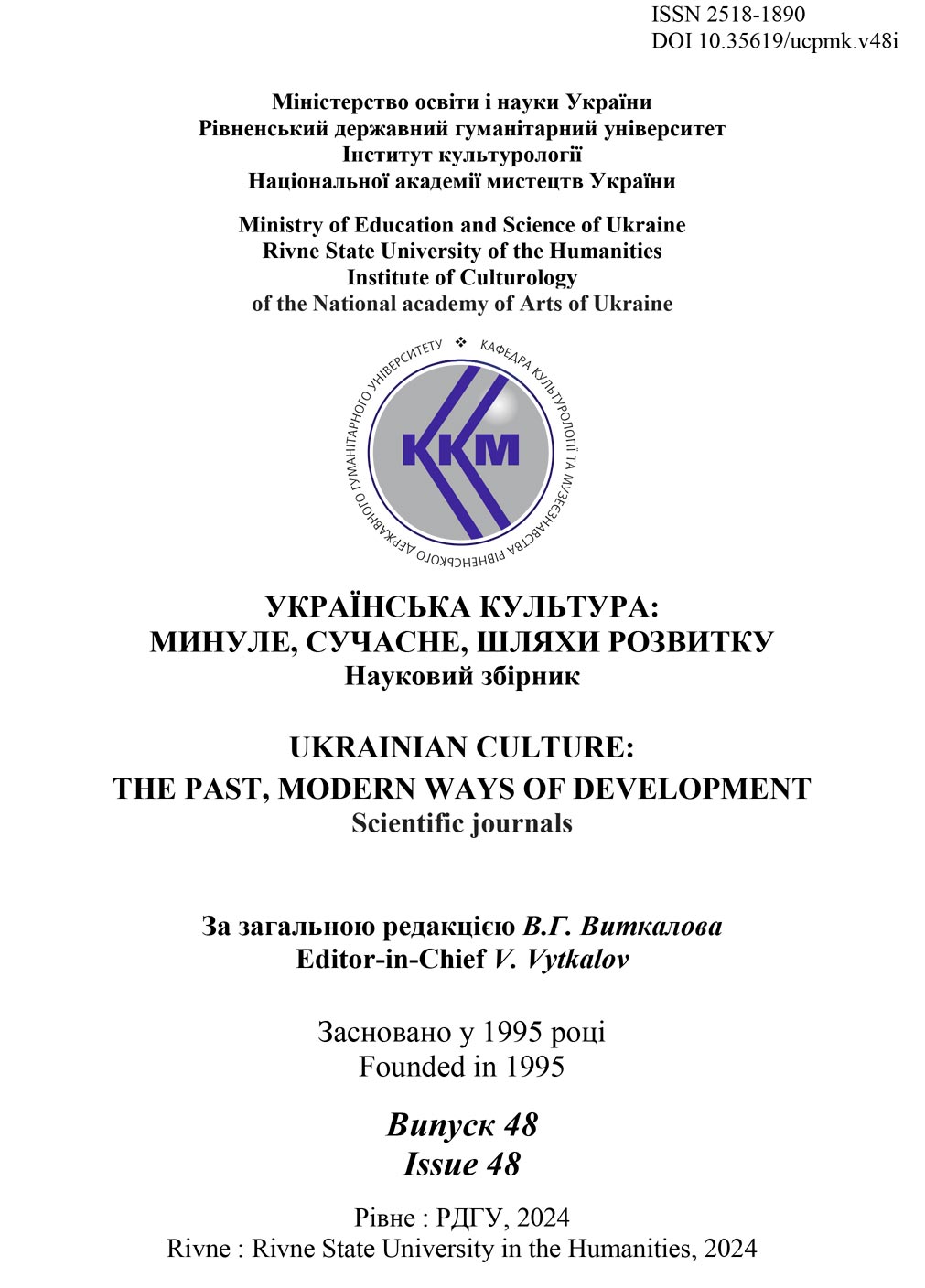ЕВОЛЮЦІЯ СЕМАНТИКИ КУЛЬТОВИХ КАМЕНІВ ТА ВІДОБРАЖЕННЯ У ЇЇ В САКРАЛЬНІЙ АРХІТЕКТУРІ ТА МИСТЕЦТВІ ДАВНЬОГО СВІТУ
DOI:
https://doi.org/10.35619/ucpmk.v48i.743Ключові слова:
сакральне мистецтво, мегалітичні споруди, кам’яний вік, культ каменів, ритуальні поховання, культ предків, космічні цикли прецесії.Анотація
Простежено динаміку формування і трансформації духовних смислів культових каменів у проекції на комунікаційні параметри їхнього існування в системі різних просторово-часових культурних координат (від початку верхнього палеоліту до початку н.е.). Еволюція семантики каменів, як предметів матеріальної об’єктивації релігійно-світоглядних уявлень, розглядається в контексті гіпотези відображення головних релігійно-світоглядних ідей певного історичного періоду у характеристиці домінуючого в той період зодіакального знака, в якому протягом 2150 р. унаслідок прецесії перебуває точка весняного рівнодення.
##submission.downloads##
Опубліковано
2024-06-12
Як цитувати
Бондарчук , Я. . (2024). ЕВОЛЮЦІЯ СЕМАНТИКИ КУЛЬТОВИХ КАМЕНІВ ТА ВІДОБРАЖЕННЯ У ЇЇ В САКРАЛЬНІЙ АРХІТЕКТУРІ ТА МИСТЕЦТВІ ДАВНЬОГО СВІТУ. УКРАЇНСЬКА КУЛЬТУРА : МИНУЛЕ, СУЧАСНЕ, ШЛЯХИ РОЗВИТКУ, 48, 6–17. https://doi.org/10.35619/ucpmk.v48i.743
Номер
Розділ
ІСТОРИКО-МИСТЕЦЬКА СПАДЩИНА УКРАЇНИ В КОНТЕКСТІ СВІТОВОГО КУЛЬТУРНОГО ПРОСТОРУ




